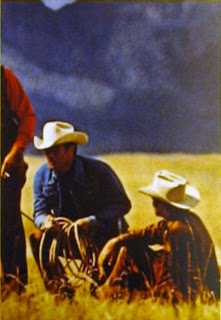Many girls have experienced an infatuation with the horse. This romance
takes many forms, from early play, through fantasy and desire, and perhaps to
the act of riding. The horse, a
symbol of beauty, power, freedom and magic, can be an object of identification
or serve as a protector. The
girl's favorite possessions surround her, including a plastic horse collection,
horse show ribbons, saddle, and her diary. The bedroom is a shrine to the
horse, and is evidence of girls' search for self-definition.
Tackling what exactly the appeal of
ponies really is, while powerfully conveying her passion for them, Susannah
Forrest has written a beautiful book about her own equine obsession, while
casting her eye over the role horses have played in popular culture. Opening
with descriptions of her Falabella obsession, and of anxieties she had as a
child that she might grow too tall to ride a Derby winner, you quickly know
you’re in the hands of a true addict.
Weaving affectionate memories of
ponies she has loved and lost, Forrest is most concerned with the role it
played from the Industrial Revolution onwards, although she takes the reader on
a brisk canter across the centuries, pointing out horse meat was a staple part
of Stone Age man’s diet, but that it wasn’t until the Renaissance that
equestrianism took on significance as a literary form.
Forrest isn’t joking when she
subtitles the book an equine obsession, because her descriptions of the ponies
who have trotted into her life are dedicated and lengthy. More compelling for
the general reader is her examination of why young girls, in particular, love
ponies so much. The golden age of girls and ponies was born in the early
20th century when horses were to give girls an independence that was quite new.
It was during the First World War that women tasted, in large numbers, the
intoxicating independence experienced from the back of a horse; their brothers
and fathers and husbands away, upper-class women in particular developed a
taste for riding astride to hounds with the same bravery as their male
counterparts, and perhaps a bit more skill.
By the Thirties and Forties, horses
and ponies had won their place within the hearts and minds of little girls. A
whole literary genre grew up around them, started by Muriel Wace, writing under
the name Golden Gorse, who declared “There is no greater pleasure in the world than
riding a good horse.”
The Pony Club was born in 1929, and
by the mid-Thirties, every girl in the country had a crush on National Velvet,
the eponymous heroine of Edith Bagnold’s novel, immortalised by Elizabeth
Taylor on screen. A thirst for novels with names like Silver Snaffles
grew; Joanna Cannan was one of the finest of these writers, although the horsey
heroine without equal was undoubtedly the show jumper Pat Smythe, who travelled
the world with her horses, combining an unequalled equine talent with an
appetite for adventure and glamour.
This truly was a golden age of riding, but so potent was
the power of those ponies that by the end of that century, a government drugs
adviser identified “equine addiction syndrome.” Horses, she writes, once “gave girls a corner of the
world where they were freed from the burden of being ‘girls’, where they could
be ambitious and brave and strong.”
~The unique roles ponies can play in the lives of girls to
make them feel strong and independent~
One of the most interesting sections relates to work by
the Swedish psychologist Sven Forsling, who set up a rehabilitation centre for
truanting girls who’d fallen into drug abuse and sexual exploitation. It had a
racing stables, where the girls were expected to look after their own horses,
which made them feel brave. The strongest evidence of this comes from one of
these girls, who, racing her horse around the track for the first time,
declared “Yes! I am divine!”
*Susanna Forrest, If Wishes Were Horses: An Equine
Obsession
*Clover Stroud, The Telegraph, March 2012





















